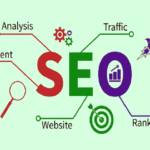This concern of the French and consumers is not limited to personal initiative: several studies, including one conducted byIFOPand 6 CAC 40 companies including Air Liquide and Sanofi had shown strong consumer expectations for concrete measures and a commitment from companies to combat global warming.
These so-called “ecological” brands have understood that meeting consumers’ growing expectations regarding the environment is a priority which involves building a truly ecological brand image, also called eco-branding .
In an era where consumersdoubt the ecological commitment of companiesand fear greenwashing , eco-branding should not be seen as a communication operation but as a reflection of the company’s overall commitment to the environment.
What is eco-branding?
Eco-branding is a marketing approach that helps businesses and consumers achieve sustainable goals and contribute to environmental preservation by using eco-design in the products , services and communication media used.
An ecological identity deeply rooted in the company
We can easily see this through the counter-examples of greenwashing : several leading ready-to-wear brands were initially accused of contributing very significantly to thepollution of rivers and the atmospherebefore starting communication campaigns on their environmental commitments.
Eco-designing your identity and communication media
Eco-design is an integral part of eco-branding : “eco-design” meansa reasoned and sustainable approach to the design of brand identity and its communication media.Eco-design concerns all communication media: it concerns web media ( see our dedicated guide ), print media, videos, graphic elements but also visual identity elements such as your logo, your typography and the colors you use.
The strategic benefits of eco-branding
Faced with the climate and environmental challenges facing our societies, eco-branding is also a strategic positioning for companies wishing to sustain their activities over the decades to come.
Reaching new market segments
This underlying trend is therefore not a passing fad : we are really witnessing a transformation in the expectations of consumers and citizens with regard to the ecological commitment of the companies from which they buy.
Employee motivation and productivity
The benefits of adopting sustainable and ecological practices in businesses are not limited to acquiring the consumers of tomorrow. Several studies, including the famousFuture of Workfrom PwC have shown that companies’ ecological commitment and CSR policies now play a key role in their ability to attract talent.
The same study, which surveyed 10,000 professionals in China, Germany, India, the United Kingdom and the United States, showed that 65% of them would prefer to work for a company with a strong social and environmental commitment.
Beyond the attractiveness of businesses, several studies including that ofUniversity of Massachusetts-Dartmouthhave shown a scientific correlation between a company’s environmental commitment and employee fulfillment at work.
Adopting an eco-friendly corporate culture is also a profitable strategy for improving employee retention within companies and thus reducing turnover costs; in an era where talent volatility is very high.
On this subject, the studyDeloitte Millennials Surveyshowed in 2015 during a survey of 7,700 subjects of the Y generation in 29 countries that 50% of them planned to leave their company in the next two years and that 70% believed that the values of the company in which they work must reflect their own values and commitment.
Other studiesshowed that in the United States, more than one in two executives would be prepared to accept a pay cut to work for a company committed to the environment, which also shows that remuneration, although still an important selection criterion for candidates, is strongly competed with by the societal and environmental commitment of companies.
The role of visual identity in eco-branding
To achieve this and create a relationship of trust between brands and consumers, it is necessary to reflect the social and ecological commitments of companies within their visual identity and communications.
Creating a more eco-friendly logo also helps reduce the amount of ink used to print the logo on each of your communication materials, which can represent astronomical amounts of resources saved depending on the size of the company.
Choice of typography and colors
On a corporate scale, the choice of fonts is far from trivial, especially when you consider that every word, communication and document will be written using that font and potentially printed thousands or even millions of times.
Some fonts, such as Garamond, Century Gothic, EcoFont, save on average between 25 and 35% ink compared to commonly used fonts like Arial.
For all your communication media, the choice of using colors also greatly influences your ink consumption in business: it is both a financial saving but also a good way of reducing the quantity of often toxic solvents released into nature.
Websites and digital communication media
To achieve coherent eco-branding , it is therefore necessary to approach the digital environment with the same ecological approach, both in the creation of messages and communication strategy and in the eco-design of digital media.
There are many methods to achieve this, which we have detailed in our guide dedicated to eco-friendly web design .
In this guide, you’ll discover that it’s possible to create digital eco-branding using several proven design methods that don’t reduce your digital performance while significantly reducing your digital carbon footprint.
Using greener hosts
These optimizations and eco-design methods allow us to save up to 75% of the resources normally used, while maintaining the same technical specifications . It is also with this eco-design vision in mind that we built the Haploïde.com website.










